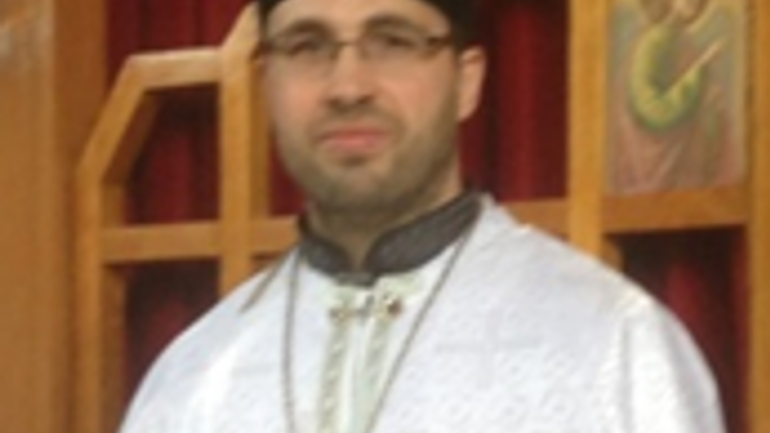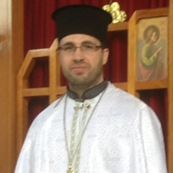Our Cultural Context: The Seedbed of Mission and Wellspring of Faith

 In his article, 'The Ecology of Faith', Andrew Sorokowski does for the discipline of missiology what no one else to my knowledge has done in so concise a way. By means of his ''matrix of culture' in which faith flourishes, Sorokowski identifies and isolates those worldly elements that shape human identity, and suggests how they enable people--both individually and corporately--to approach the Divine. In doing so, he both supports, and elaborates on, Archbishop Thomas Gullickson's positive appraisal of the 'Volkskirche', and so affirms cultural context as the incomparable seedbed for the Christian life.
In his article, 'The Ecology of Faith', Andrew Sorokowski does for the discipline of missiology what no one else to my knowledge has done in so concise a way. By means of his ''matrix of culture' in which faith flourishes, Sorokowski identifies and isolates those worldly elements that shape human identity, and suggests how they enable people--both individually and corporately--to approach the Divine. In doing so, he both supports, and elaborates on, Archbishop Thomas Gullickson's positive appraisal of the 'Volkskirche', and so affirms cultural context as the incomparable seedbed for the Christian life.
That good religion is fostered best within culture, especially when the best of culture is made available and encouraged, should not really be that much of a revelation. In spite of this, however, the voice of the Church in encouraging either authentic folk culture or a more transcendent classical culture, has been somewhat muted in the last fifty years. In turn, traditional Catholics and Orthodox alike have in some cases despaired of culture--that is, of language, food, dance, music, visual arts and crafts--and it's ability to channel good religion. By way of illustration, I had a debate some years ago with a traditional Catholic mother of French-Canadian extraction who chose to home-school in English rather than to send her children to the local French school. The mother maintained that it was more important for her children to 'learn about the Faith' than to maintain their linguistic inheritance. Of course, I could not disagree that it was important her children should learn about the Faith; but on the basis that this was going to happen in the home anyway, and that the school would actively support any such teaching, I suggested that to lose sight of their French-Canadian traditions, the children would lose an invaluable aide to faith and an incomparable means by which to experience and live out that faith which they could not only call their own, but which would unite them with their ancestors in a particular and estimable way. Alas, I made little headway with my argument.
For all this, an unavoidable, yet seldom considered, dimension of Christ's first miracle at the wedding at Cana is the fact that he would have been both familiar and comfortable with the music and dances that characterised such affairs. Indeed, we can well imagine that the same God-Man who took heed to the diminishing wine stocks, also enjoyed the other forms of physical communion that characterised ancient Judaean weddings. I would go further and say that it is incumbent on us to take seriously the fact that Jesus likely had olive skin, dark hair, spoke Aramaic in the streets and Hebrew in the Synagogue, and knew and embraced all the cultural traditions of his tribe. In other words, our conceptions of Jesus should not only be those of Christ, Messiah, Incarnate Logos; they should very much include his full and very real humanity, in all its wonderful dimensions.
In theological terms, this side of Jesus' identity corresponds with the exitus of God's work: that is, as God the Word leaves His place in heaven and takes on flesh, He takes on every aspect of that flesh, including location and custom, and makes it His own. In so doing, he sanctifies culture--revealing it to be, as flesh itself is--an instrument of human salvation. This suggests in turn that, far from there being a dichotomy between 'teaching the Faith' and passing on family language and traditions, the two walk hand-in-hand, and can be appreciated best together.
The same can be said of so-called 'high culture' as of 'folk culture'. The finest visual art, the greatest compositions, the highest cuisine, the most exquisite dance, the best literature: such works inherently point to the Good, and in so doing, God. There is no need for any of these things to accurately and obviously reflect Nicene Christianity in order to be truly reflective of the Divine; it would be wrong to go looking for the 'Christianity' of their creators. Art is not thinly-devised code. Insofar as it is good, it is sufficient for our purposes as a nurturer of faith. As a result, Christians should not only feel liberated in their approach to art and high culture; I would argue that they should, where possible, even feel compelled to seek it out.
Andrew Sorokowski's 'cultural matrix' challenges us to develop our understanding of context as we live out, and bear witness to, what we believe about Christ. At the same time as we do this, we can expect to be enriched and our domestic lives improved. This is because our homes and families can only stand to benefit when we become more aware of the culture around us, including both our ancestral traditions and the more refined forms that we encounter on the stage, in the gallery, or at the stroke of a poet. Pope Benedict encouraged the 'reform of the reform' with respect to liturgy, but of course he understood liturgy to mean something more than what happens before the Altar. For Pope Benedict, liturgy was cosmic in scope, and included every detail of our lives. For faith to thrive, then, it is for us to foster the liturgy away from the Altar, to understand the culture in which we live and to embrace the good in it, to pursue enrichment through engagement with art, music and literature, and so to make the most of the exitus. To be sure, the fullness of the Christian life is found, expressed, and shared best when the liturgy of the Altar and the Liturgy of the world are lived as a unity, when the harmony of the exitus et reditus is appreciated and embraced.









